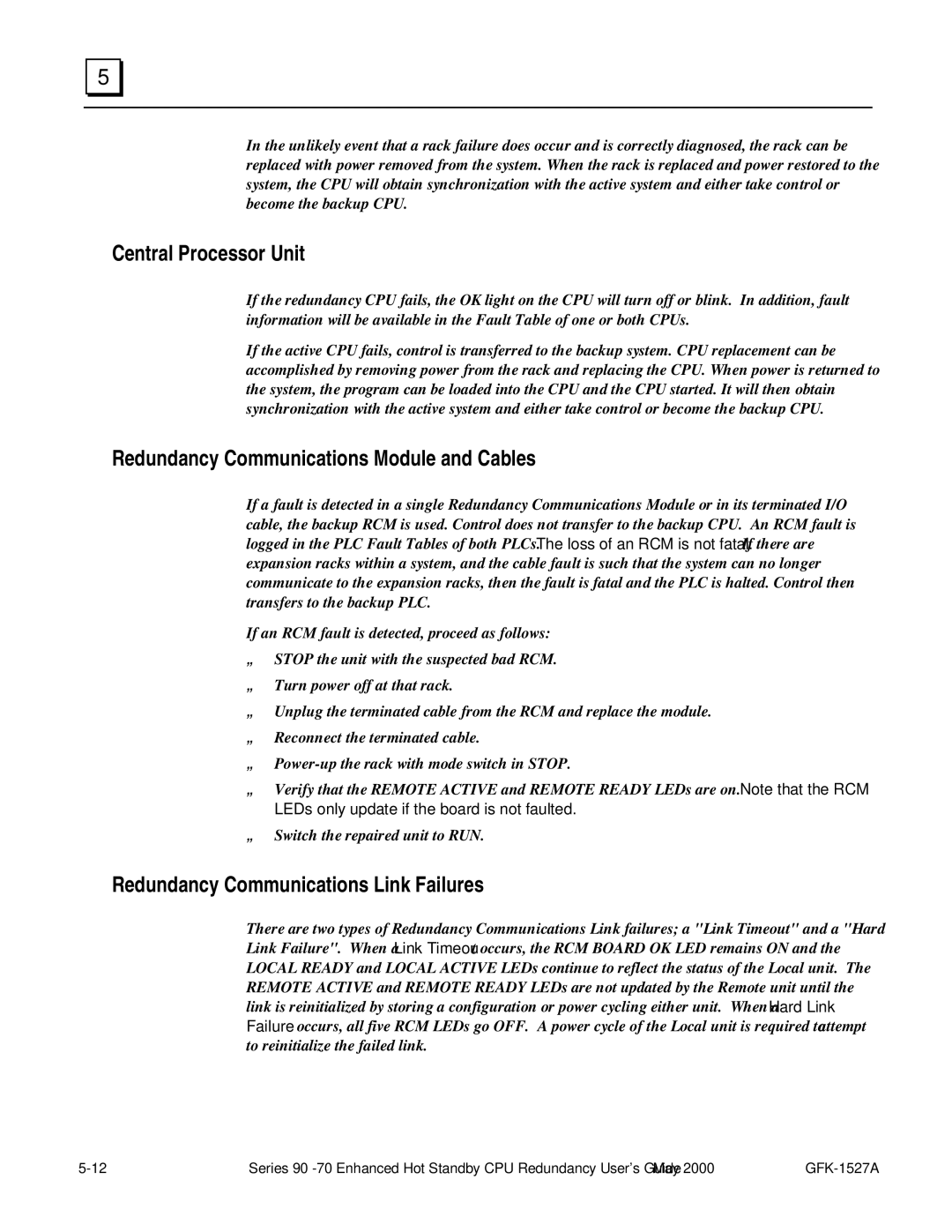5 |
In the unlikely event that a rack failure does occur and is correctly diagnosed, the rack can be replaced with power removed from the system. When the rack is replaced and power restored to the system, the CPU will obtain synchronization with the active system and either take control or become the backup CPU.
Central Processor Unit
If the redundancy CPU fails, the OK light on the CPU will turn off or blink. In addition, fault information will be available in the Fault Table of one or both CPUs.
If the active CPU fails, control is transferred to the backup system. CPU replacement can be accomplished by removing power from the rack and replacing the CPU. When power is returned to the system, the program can be loaded into the CPU and the CPU started. It will then obtain synchronization with the active system and either take control or become the backup CPU.
Redundancy Communications Module and Cables
If a fault is detected in a single Redundancy Communications Module or in its terminated I/O cable, the backup RCM is used. Control does not transfer to the backup CPU. An RCM fault is logged in the PLC Fault Tables of both PLCs. The loss of an RCM is not fatal. If there are expansion racks within a system, and the cable fault is such that the system can no longer communicate to the expansion racks, then the fault is fatal and the PLC is halted. Control then transfers to the backup PLC.
If an RCM fault is detected, proceed as follows:
STOP the unit with the suspected bad RCM.
Turn power off at that rack.
Unplug the terminated cable from the RCM and replace the module.
Reconnect the terminated cable.
Verify that the REMOTE ACTIVE and REMOTE READY LEDs are on. Note that the RCM
TLEDs only update if the board is not faulted. Switch the repaired unit to RUN.
Redundancy Communications Link Failures
There are two types of Redundancy Communications Link failures; a "Link Timeout" and a "Hard Link Failure". When a Link Timeout occurs, the RCM BOARD OK LED remains ON and the LOCAL READY and LOCAL ACTIVE LEDs continue to reflect the status of the Local unit. The REMOTE ACTIVE and REMOTE READY LEDs are not updated by the Remote unit until the link is reinitialized by storing a configuration or power cycling either unit. When a Hard Link Failure occurs, all five RCM LEDs go OFF. A power cycle of the Local unit is required to attempt to reinitialize the failed link.
Series |
